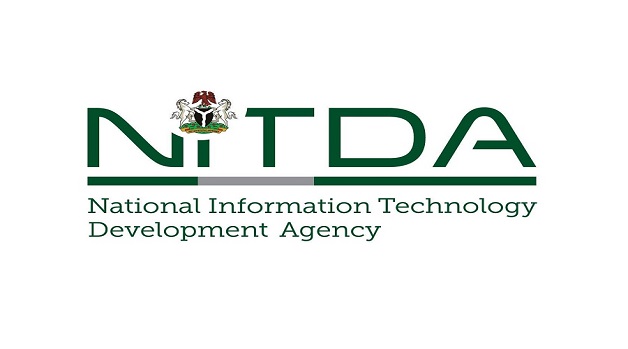E-Business
The Evolving Threat Landscape: Top Cybercrime Trends Organisations Should Take Note of in 2023

By Emmanuel Asika
The cyber threat landscape continued to evolve last year, with malevolent players joining forces more than ever before, exchanging access to networks and systems, sharing malware and sharpening their attack methods.

Such heightened collaboration, coupled with the low cost of malware – three-quarters of malware kits cost less than ₦7,000 – are further triggering cybercrime to be more accessible.
The implication being that more devices and end-users will be vulnerable to being under attack in 2023, and as cyber criminals intensify attempts to access enterprises – these systems, PCs and printers will be at the forefront.
These challenges, for cyber-security experts, will be intensified by the growing economic slump and uncertainties. As cybersecurity spending is set to increase by 13.2% in 2023, cost projections will be under critical observation, with emphasis on the most important cybersecurity demands.
With tough impending decisions, below are four cybersecurity trends that institutions must plan for in 2023:
- Increasing costs can prompt an inflow of cyber hustlers and money mules, powering the cybercrime economy and leaving users at risk
The increase in the cybercrime gig economy, with its swing to platform-based business models, has made cybercrime simpler, affordable, and more dynamic.
Cybercrime devices and mentoring services are readily available at low costs, luring cyber hustlers – adherents with little technical skill – to access needed information to make gains.
With an impending global downturn, easy access to cybercrime tools and skills could enhance the number of scam SMS messages and emails filling our inboxes.
Lured by the potential of quick money, there is a likelihood of seeing more recruits into money-muling schemes, unintentionally encouraging the cybercrime ecosystem as enablers of fraudulent transactions, money laundering, and perhaps ransoms payments.
The interrelated nature of the cybercrime gig economy means that threat actors can easily make money from email compromise attacks.
If they find a victim and succeed by compromising an enterprise device, they can market that access to bigger ransomware gangs. This gives structured groups of hackers more reach, hence feeding into the cybercrime ecosystem.
With increasing attacks against users, embedding security in all devices from the hardware will be significant to prevent, detect and recover from attacks.
Adopting a robust security culture is key for building resilience, however, only when combined with technology that decreases an organization’s attack interface. A whole group of threats can be eradicated without relying on detection by isolating risky activities like malicious emails.
Threat containment technologies in this case ensure that if a user opens a malicious link or attachment, the malware can’t infect any data. With this model, businesses reduce the propensity of malicious attacks and protect employee interests without compromising their workflows.
- Notorious hackers will invest in more attacks below the operating system.
Until recently, firmware attacks were only used by sophisticated threat groups and countries.
However, just last year, early signs revealed an increased interest and development of attacks below the operating system – from tools to hack BIOS passwords, to rootkits and trojans targeting device’s firmware. Today, we now see firmware rootkits advertised relatively cheaply on cybercrime marketplaces.
As one would expect, sophisticated threat actors are always looking to stay one step ahead in terms of their attack capabilities. Unfortunately, firmware security is frequently disregarded by organizations, giving room for adversaries to attack and exploit.
Access to the firmware level allows attackers to gain persistent control and hide below the operating system, making them very hard to detect – let alone remove and remediate.
As such, organizations and individuals must ensure they understand industry best practices and standards for device hardware and firmware security.
Additionally, organizations must further endeavour to understand and evaluate the latest technology readily available to protect, detect and recover from firmware attacks.
- Remote access equipment will be on the forefront for attacks
Session hijacking is anticipated. The year will witness a growth in popularity – where an attacker hijacks a remote access session to obtain an organisation’s sensitive data and systems.
The user is characteristically unsuspecting that anything malicious has happened and takes milliseconds to inject key sequences and issue commands that generate an alternative gateway for persistent access.
It works even if Privileged Access Management (PAM) systems employ Multi-Factor Authentication (MFA), such as smart cards.
When a malicious attack links to Operational Technology (OT) and Industrial Control Systems (ICS) running factories and industrial plants, there could also be a noticeable impact on operational readiness and safety – possibly cutting off access to energy or communication for entire areas.
The only way of preventing these kinds of attacks is breaking the attack chain and strong isolation technology, either through using a physically separate system, like a Privileged Access Workstation (PAW), or virtual separation, via hypervisor-based approaches.
- Neglect print security at your risk in 2023
Presently, print security is endangered by the constant tendency to be a neglected factor of the total cybersecurity environment and with more printers connected to corporate networks due to hybrid working, the risks keep increasing. Institutions need to structure security policies and processes for monitoring and protecting print gadgets from attacks, at home and in the workplace.
The challenge is the risk telemetry coming from end points, including printers, is growing by the day. Consequently, we will see institutions concentrate investments on solutions and services delivery that provide functional intelligence rather than merely delivering more security data.
Tackling increasing threats
This year, organisations must be intentional with their security approaches. Often, security glitches start at the endpoint, hence, by embedding protection in these devices, businesses can lessen the burden on their security unit.
Regardless of the threats institutions face in 2023, it is apparent that the tactics we deploy to protect devices and data has to change.
The key consideration here is strategic resource allocation, and the security teams need to recognise the specific areas of the business that are most susceptible to threats, and that would be most impacted in the event of a breach.
It is also vital to have a layered approach to security which will allow institutions to execute isolation, gain actionable intelligence, isolation and more, whilst helping to lessen their attack surface and maintain safety of key data.
Emmanuel Asika is Country Head for Nigeria, at HP
E-Business
NITDA, API Partner Against Harmful Online Content

National Information Technology Development Agency (NITDA), in partnership with the Advocacy for Policy and Innovation (API), has convened a one-day workshop in Abuja to advance dialogue on the draft Online Harm Protection (OHP) Bill to confront harmful online content.

The bill, a rights-based, locally rooted, and multi-stakeholder initiative, is aimed at addressing the challenges of the digital age.
The event, which held yesterday, brought together government officials, civil society, academics, digital platforms, and legal experts to shape a policy framework designed to combat online ills such as cyberbullying, disinformation, hate speech, digital exploitation, and gender-based violence, while safeguarding democratic freedoms and digital inclusion.
In his keynote remarks, Kashifu Inuwa, director general, NITDA urged a paradigm shift in the way society engages with digital technologies.
“For almost two decades, we have viewed digital technology through a consumer lens. But these technologies are not just products and services. They are transforming how we live, work, and interact. They shape our politics, our society, and our democracy,” he said.
Warning against unaccountable digital power in the hands of private corporations, the DG likened the digital journey to the tale of Alice in Wonderland, where initial fascination with innovation has given way to deeper concerns about privacy, autonomy, and manipulation by big tech platforms.
“We thought we were using Google, but now we realise Google is using us. Social media, once a tool of expression, has become a tool of surveillance and influence,” Inuwa noted.
He, therefore, emphasised the urgency of developing a democratic and accountable framework. He explained that following the 2021 Twitter ban, NITDA facilitated dialogue between the government and platform operators, leading to a Code of Practice that stressed Nigeria’s sovereignty and legal standards.
According to him, the same process birthed the multi-stakeholder steering committee and the OHP White Paper in December 2024, laying the foundation for the current legislative push.
Earlier in her opening remarks, Victoria Manya, co-founder, API, observed the moral and civic necessity of the bill.
Her words: “The internet did not break society, it merely revealed its unfiltered version. Every day, Nigerians are exposed to harassment, disinformation, exploitation, and even algorithmic violence. The OHP Bill is not a war on the Internet. It is a peace offering to its users, a social contract for a digital future that is safe, inclusive, and democratic.
“We cannot answer the question of algorithmic power with unchecked state control. We must answer it with shared, rights-based governance. This bill must not be written for the people, but with them.”
E-Business
How AI Alert by Airtel is Transforming Mobile Security in Africa

These days, people rely heavily on their mobile phones for talking, texting, banking, social media, and storing important personal information. Because of this, scammers and spammers often target phone users.

Mobile fraud, like fake SMS messages and scams, is becoming more common and putting millions at risk of losing money or having their private details stolen.
Airtel’s new AI-powered Spam Alert Service offers a smart and timely way to fight back, marking a major step forward in protecting mobile users in Africa.
A brief look at mobile fraud and spam
Mobile fraud and spam are problems around the world, but they hit harder in places where mobile phone use is growing fast, and safety measures haven’t caught up.
A 2024 report from GSMA Mobile Economy shows that more than 20% of mobile users globally have experienced some kind of mobile fraud, with spam texts being one of the most common.
In Nigeria, the Nigerian Communications Commission (NCC) has noted a sharp rise in scam messages and fake calls, leading to yearly losses in the hundreds of millions of dollars.
These spam texts often include fake links, harmful ads, or tricks to steal personal details. Many people get caught without knowing, which can lead to stolen bank money, identity theft, or damaged devices.
Older spam blockers only work on certain phones or apps, leaving many people, especially those using basic phones, without protection.
Why Airtel’s AI Spam Alert Service stands out
Airtel, a top telecom company in Africa, has launched a new and free service called the AI Spam Alert Service. It’s the first of its kind in Africa and aims to protect mobile users from spam text messages as they come in.
What makes this service different is that it doesn’t read or check the actual message content. Instead, it uses advanced artificial intelligence to quickly study the sender’s behaviour using over 250 signs or patterns, all within a fraction of a second.
Some of those parameters, according to Airtel, includes:
- How frequently the sender changes SIM cards.
- The volume and frequency of messages sent by the message initiator to different recipients.
- The geographical spread of the recipient numbers, whether messages are targeted locally or dispersed nationwide.
- Whether the sender receives replies or only sends messages.
- A cross-reference of numbers previously reported for spam activity.
The AI completes this analysis in just 2 milliseconds, faster than the blink of an eye, allowing real-time alerts to subscribers as suspected spam messages arrive.
How Airtel’s Spam Alert Service improves mobile safety and trust
Airtel’s new AI-powered spam alert system is set to make a big difference in mobile security across Nigeria and the rest of Africa. Instead of depending on users to block spam themselves, the service works directly through the network to stop suspicious messages before they reach people’s phones.
This kind of technology helps users feel safer and more confident using mobile networks—especially as more people rely on their phones for banking and other money-related services.
A 2025 report by McKinsey Digital shows that many Africans worry about mobile security when using digital financial tools. By reducing the risk of spam and fraud, Airtel is not only protecting its users but also helping to build a safer digital space where more people can take part in the growing mobile economy.
According to Airtel, within two months of its launch, the spam alert service system has identified 9,667,008 messages as potential spam.
Why this is a game changer
By building a service that is first-of-its-kind in Africa, Airtel is leading the way in offering spam alerts, powered by AI directly on its network, for over 150 million subscribers across the continent.
In addition, the service is quick, spotting suspicious sender activity in just milliseconds without reading users’ messages.
Finally, the service is free and requires no app downloads or extra setup. Airtel says the turns on automatically, making it easy for everyone to stay protected, even those using basic phones.
By sending signals to users before problems happen, Airtel boosts trust and encourages more people to safely use mobile money and other digital services.
Scammers are always finding new ways to trick consumers through the ubiquitous mobile phones, so increased demand for security improvements is, understandably, shifting to telecom companies.
Airtel’s AI Spam Alert Service is a strong and timely move toward better, smarter protection for users. As more people start using the service, it should help cut down fraud, keep personal information safe, and make mobile use more enjoyable.
As African economies continue to grow more digital, users of telecom services will need more secure and reliable ways to communicate, and Airtel is leading the way towards that safe future.
E-Business
Microsoft Server Hack Likely Solo Actor, Thousands at Risk

A widespread cyberattack targeting Microsoft’s (MSFT.O) server software used by thousands of government agencies and businesses for internal document sharing was likely orchestrated by a single actor, a cybersecurity researcher said on Monday.

Microsoft issued an alert on Saturday warning of “active attacks” on on-premise SharePoint servers.
The company clarified that SharePoint Online, part of the Microsoft 365 cloud suite, was not affected by the exploit, which is considered a “zero-day” vulnerability due to its previously undiscovered nature.
“Based on the consistency of the tradecraft seen across observed attacks, the campaign launched on Friday appears to be a single actor. However, it’s possible that this will quickly change,” Rafe Pilling, director of Threat Intelligence at Sophos, a British cybersecurity firm.
That tradecraft included the sending of the same digital payload to multiple targets, Pilling added.
Microsoft said it had “provided security updates and encourages customers to install them,” a company spokesperson said in an emailed statement.
It was not clear who was behind the ongoing hack. The FBI said on Sunday it was aware of the attacks and was working closely with its federal and private-sector partners, but offered no other details.
Britain’s National Cyber Security Centre did not immediately respond to a request for comment.
The Washington Post said unidentified actors in the past few days had exploited a flaw to launch an attack that targeted U.S. and international agencies and businesses.
According to data from Shodan, a search engine that helps to identify internet-linked equipment, over 8,000 servers online could theoretically have already been compromised by hackers.
Those servers include major industrial firms, banks, auditors, healthcare companies, and several U.S. state-level and international government entities.
“The SharePoint incident appears to have created a broad level of compromise across a range of servers globally,” said Daniel Card of British cybersecurity consultancy, PwnDefend.
“Taking an assumed breach approach is wise, and it’s also important to understand that just applying the patch isn’t all that is required here.”

 E-Financial3 days ago
E-Financial3 days agoUBA’s LEO Becomes Africa’s First Chatbot to Enable Cross-Border Payments

 News3 days ago
News3 days agoUN Appoints Sa’id, Nigerian to Nuclear Panel

 E-Business3 days ago
E-Business3 days agoNIMC Enrolls 122m for NIN, Cuts Extortion by 40 Percent

 Telecom2 days ago
Telecom2 days agoMTN Nigeria Rewards 1,500+ Winners with ₦290m in Mega Billion Promo

 Telecom3 days ago
Telecom3 days agoMTN Urges Nigerian to Regards Telecom Infrastructure as National Assets

 General News3 days ago
General News3 days agoAppeal Court Nullifies Registration of ‘KPMG Professional Services’

 E-Financial2 days ago
E-Financial2 days agoNaira Slides Again, Hits ₦1,532.34/$ Despite CBN’s Dollar Push

 Telecom3 days ago
Telecom3 days agoBitget Launches $6M Global Crypto Trading Contest with New Competitive Segments


























